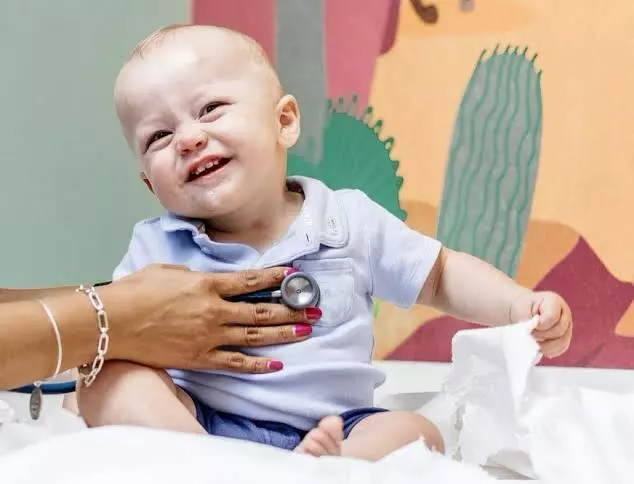10 in 1,000 newborns have CHD: Understanding Congenital Heart Disease and its treatment
Doctors insist on creating awareness about congenital heart disease in children, identification and treatment
By Neelambaran A
Doctors insist on creating awareness about congenital heart disease in children, identification and treatment
Hyderabad: Congenital Heart Disease (CHD) refers to structural abnormalities of the heart present at birth. These defects occur during foetal development and affect the heart’s walls, valves or blood vessels. Around a 10 in 1,000 newborns have CHD and are mostly curable.
Experts insist on creating awareness about the CHD so that it is identified early, diagnosed and treated appropriately.
The CHD awareness week is observed between February 7 and 13 to create awareness among parents, society and caregivers. Campaigns are held in schools and other institutions.
What are types of CHD and its treatment?
Common types of CHD include holes between heart chambers, narrowed valves or incorrectly positioned blood vessels.
CHD ranges from mild conditions that may require no treatment to complex defects needing immediate surgical intervention.
Dr Swetha Bakhru, senior consultant of paediatrics, Rainbow Children’s Heart Institute, said, “Around 10 per cent of the CHD need surgery within 3 to 6 months of birth. Any delay can lead to permanent damage, loss of life and many children don’t see their first birthday.”
Caseload in India
Over 2 lakh children every year in India are born with CHD. Though the facilities for treatment have improved across different locations, as per reports, most populous states like Uttar Pradesh and Bihar lack sufficient facilities.
What are the symptoms of CHD?
It is important for parents, medical professionals and caregivers to identify the symptoms early for adequate intervention.
“Symptoms can include bluish skin (cyanosis), rapid breathing, poor feeding and delayed growth in infants. Some cases may have genetic causes, others may result from environmental factors during pregnancy,” Dr Swetha said.
Treating born and unborn children
Modern technology now can help cure some cases of CHD even before the child is born. Facilities for diagnosis for newborns have increased remarkably too.
“Recently, a child was treated for CHD before birth in the centre at the hospital. This involves sending a button-like structure through the leg vein and closing the holes without surgical intervention,” Dr Swetha added.
The common diagnostic process includes ultrasound, X-ray and electrocardiogram.
“Echocardiogram, MRI and cardiac catheterisation are other diagnoses used. With the expertise and skill of doctors increasing, the diagnosis and treatment has increased the surgical outcome to more than 95 per cent,” Dr Swetha said.
Early detection and treatment crucial for active life
Once adequate intervention is done, most of the children can lead an active life.
“Timely action can ensure an active life for the child. They can have normal schooling, social life and intellectual thinking. But all these depend on how early we identify and treat the condition,” Dr Swetha said.